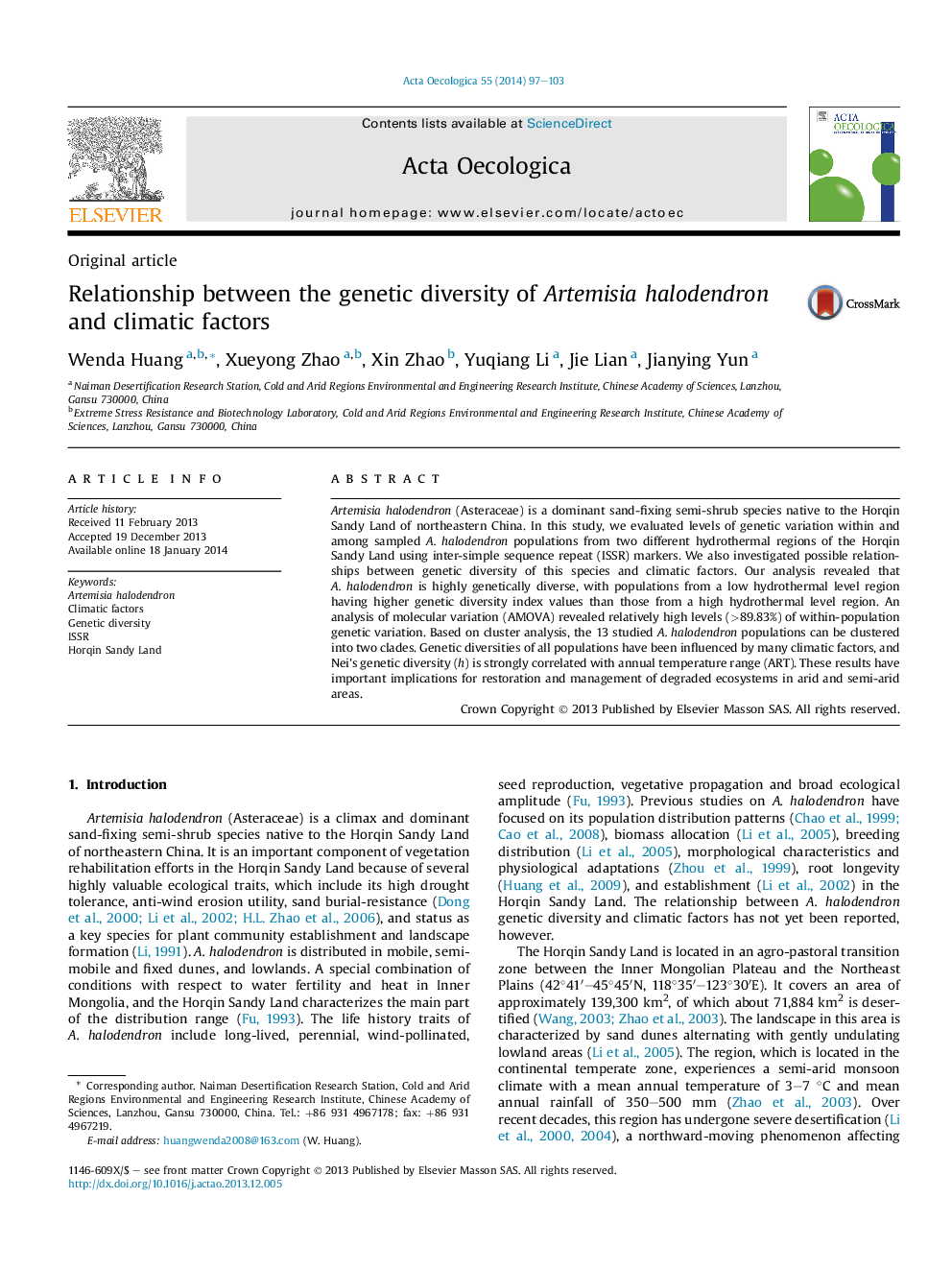| Article ID | Journal | Published Year | Pages | File Type |
|---|---|---|---|---|
| 4380754 | Acta Oecologica | 2014 | 7 Pages |
Abstract
Artemisia halodendron (Asteraceae) is a dominant sand-fixing semi-shrub species native to the Horqin Sandy Land of northeastern China. In this study, we evaluated levels of genetic variation within and among sampled A. halodendron populations from two different hydrothermal regions of the Horqin Sandy Land using inter-simple sequence repeat (ISSR) markers. We also investigated possible relationships between genetic diversity of this species and climatic factors. Our analysis revealed that A. halodendron is highly genetically diverse, with populations from a low hydrothermal level region having higher genetic diversity index values than those from a high hydrothermal level region. An analysis of molecular variation (AMOVA) revealed relatively high levels (>89.83%) of within-population genetic variation. Based on cluster analysis, the 13 studied A. halodendron populations can be clustered into two clades. Genetic diversities of all populations have been influenced by many climatic factors, and Nei's genetic diversity (h) is strongly correlated with annual temperature range (ART). These results have important implications for restoration and management of degraded ecosystems in arid and semi-arid areas.
Related Topics
Life Sciences
Agricultural and Biological Sciences
Ecology, Evolution, Behavior and Systematics
Authors
Wenda Huang, Xueyong Zhao, Xin Zhao, Yuqiang Li, Jie Lian, Jianying Yun,
